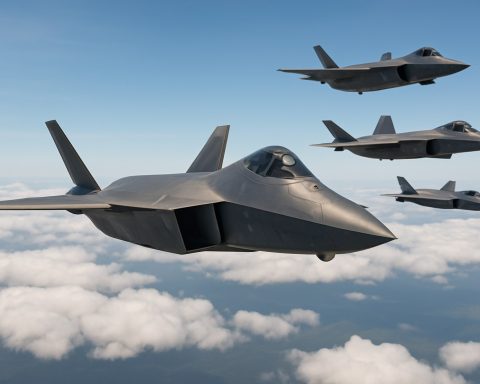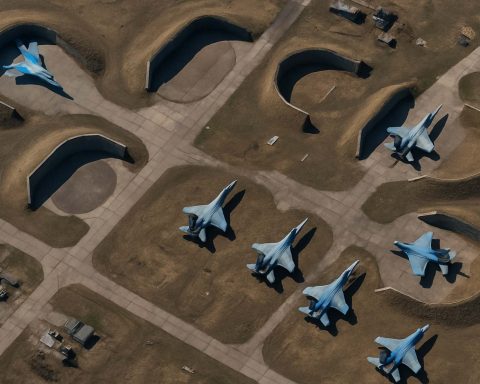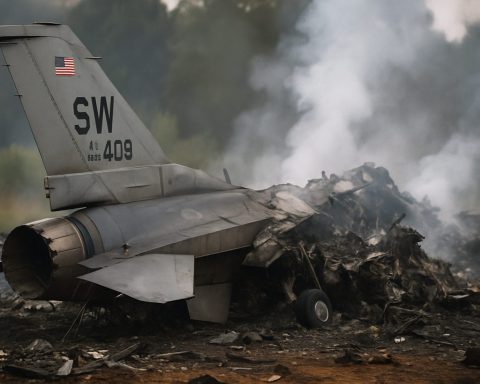- Boeing is developing the F-47, poised to replace the F-22 as a 6th-generation fighter for the U.S. Air Force.
- The design includes canard foreplanes, enhancing maneuverability but potentially compromising stealth with increased radar visibility.
- Speculation arises around the use of advanced materials or design tactics to maintain stealth despite canard incorporation.
- Historical parallels, like China’s Chengdu J-20, showcase mixed opinions on canard designs affecting radar cross-section visibility.
- Boeing is in the Engineering and Manufacturing Development phase, with a $20 billion budget for this next-generation fighter.
- The true capabilities and design secrets of the F-47 remain a subject of intense scrutiny and speculation.
The bustling corridors of military aviation have buzzed with speculation ever since Boeing was tapped to shape the future of aerial combat with the U.S. Air Force’s forthcoming F-47—a 6th-generation marvel poised to replace the venerable F-22. Yet beneath the surface of this venture, a storm brews around the fighter’s design, particularly its curious incorporation of canard foreplanes.
Canards are inherently a mixed blessing in aerodynamics. These sleek, forward-set wings promise sharper maneuverability, allowing aircraft to slice through the sky with precision. But this agility comes at a cost: increased radar visibility. For an aircraft hoping to be the unseen specter of the skies, like the F-22 or F-35, this poses a conundrum. Traditionally, stealth relies on natural predators’ art of invisibility—no protrusions, no reflections—designs where every inch is honed to deflect radar.
Herein lies the paradox of the F-47: a design ostensibly betraying the very stealth principles that have defined American air dominance. So why the canards? Are these artistic renderings a clever ruse, a deliberate sleight of hand by the Air Force and Boeing to guard the fighter’s true form? Could there be advanced materials at play, whispering the promise of invisibility even in the face of physical laws?
While aviation experts argue over the finer points of RCS (Radar Cross Section) measurements and planform alignment, historical lessons of deception reverberate. Consider the Chengdu J-20, its critics abound precisely for its canards, accused of shouting its presence to radar arrays far and wide. Yet, those detractors may have missed the forest for the trees if evolving technologies prove capable of cloaking these surfaces in shadows.
In these murky waters, might the F-47 be pulling the ultimate bluff? It’s a puzzle enticing foreign analysts and aviation enthusiasts alike, inspiring them to scrutinize every pixel of official images. Is the real F-47 a stealthier beast altogether, concealed beneath a veil of drawn feathers and imagined imperfections?
As Boeing steers through the Engineering and Manufacturing Development phase, tasked with sculpting this next-generation fighter with a $20 billion chisel, the world’s eyes watch avidly. Is the future of stealth in whimsical design or breakthrough coatings impervious to radar revelation? Only time—and the eventual unmasking of the F-47—will answer.
In a landscape crowded with questions, one takeaway remains crystalline: sometimes, the key to mastery lies not in what is seen, but in what is left to the imagination. For now, the F-47 remains a phantom-like figure, slipping in and out of the shadows until its true form takes to the skies.
Boeing’s F-47: A New Era of Aerial Combat or a Strategic Deception?
Unpacking the Mystique of the Boeing F-47
The aviation world is rife with speculation as Boeing develops the F-47, the U.S. Air Force’s next-generation fighter jet. Set to replace the iconic F-22, the F-47 has stirred controversy, particularly around the inclusion of canard foreplanes in its design. This feature has left many wondering whether the F-47 truly represents a breakthrough in stealth technology or a clever façade meant to mislead adversaries.
F-47’s Canard Controversy: Innovation or Invisibility Risk?
Canard Advantages:
– Agility: Canards enhance maneuverability, allowing pilots extensive control over pitch and roll, potentially outmaneuvering adversaries.
– Lift Benefits: These forward-set wings can improve lift, crucial during combat maneuvers but possibly at the cost of increased radar cross-section (RCS).
Radar Visibility Concerns:
– Traditional stealth relies on smooth, uninterrupted surfaces to avoid radar detection, a design ethos potentially compromised by canards. Hence, the inclusion of canards raises questions about radar vulnerability unless mitigated by new materials or coatings.
Advanced Materials and Radar Absorption
With the challenge of maintaining stealth while enhancing agility through canards, new materials and technology are likely pivotal:
– Metamaterials: These engineered materials can manipulate electromagnetic waves, potentially reducing radar visibility despite physical protrusions.
– Radar-Absorbent Coatings: Innovations in coatings could cloak canard surfaces, maintaining stealth.
Pressing Questions About the F-47
1. What technologies could offset the radar cross-section increase due to canards?
Advanced radar-absorbent materials and coatings could mask the radar signature of protruding canards.
2. How might the F-47’s design influence global military aviation trends?
If successful, the F-47’s combination of canards and new stealth materials could set a precedent, with rivals potentially adopting similar hybrid designs.
3. Could the F-47 reshape perceptions of military aircraft design?
A successful integration of these elements may redefine how stealth and maneuverability coexist, leading to a new generation of versatile, agile fighters.
Industry Insights and Future Prospects
Market Forecast and Trends:
– With an estimated $20 billion investment in development, the F-47 is poised to influence defense markets globally, prompting investments in counter-stealth technologies.
Compatibility and Integration:
– Expected to integrate seamlessly with existing U.S. Air Force systems, the F-47 may also rely heavily on AI-driven technologies, further advancing aerial combat capabilities.
Conclusion: Navigating the Horizon of Aerial Dominance
The F-47 is much more than an aircraft; it’s a potential game-changer in military aviation. As Boeing navigates its evolutionary path, the real impact of the F-47 will hinge on its ability to invisibly conquer airspace. Stay informed on developments via credible sources like Boeing and keep an eye on emerging stealth technology trends.
Quick Tips for Military Aviation Enthusiasts:
– Stay Updated: Follow authoritative sources for the latest defense technology developments.
– Embrace AI Tools: Consider learning about AI’s role in modern aviation for broader understanding.
In summary, while shrouded in mystery and debate, the F-47 may soon redefine key facets of stealth and agility, pushing the boundaries of what next-gen fighters can achieve.









